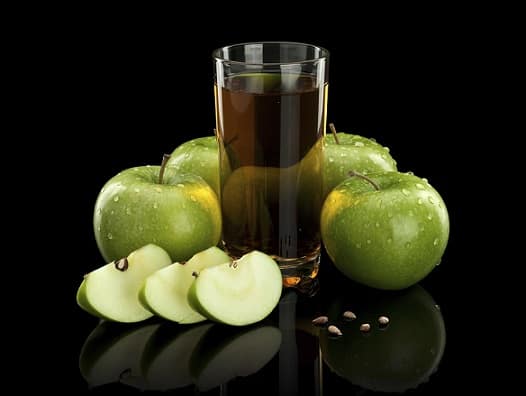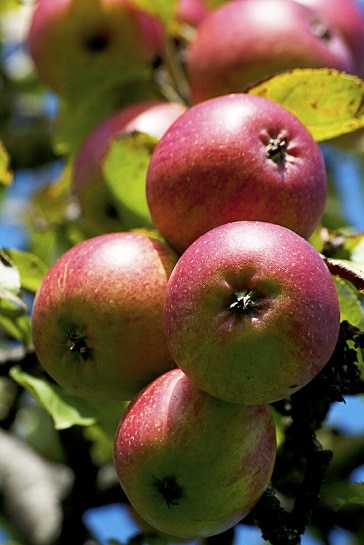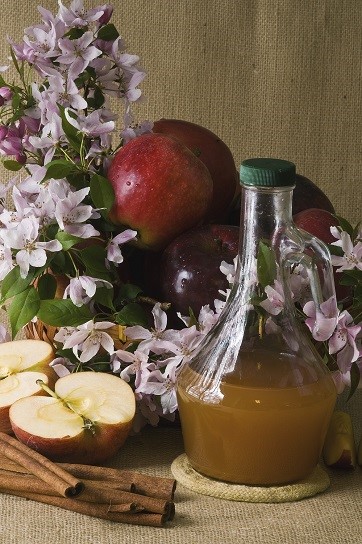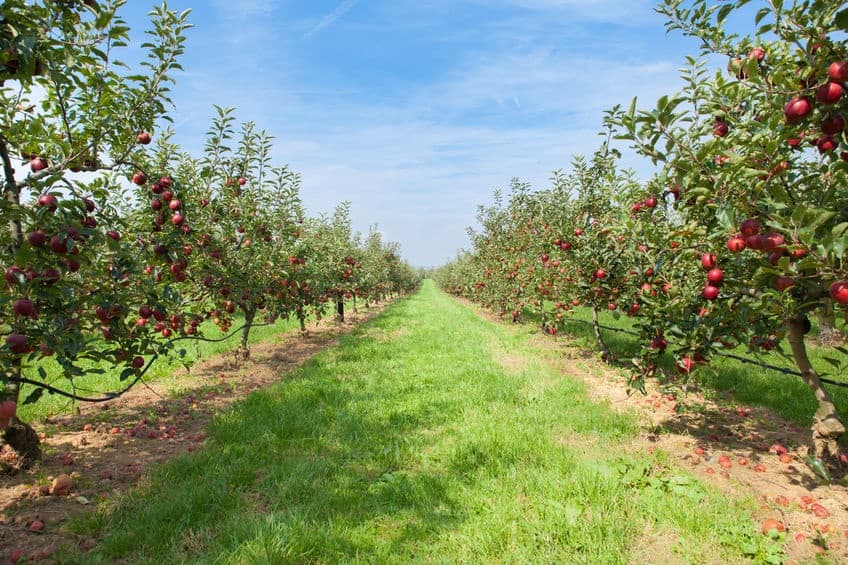 It’s always great when an exotic acne-clearing herb is discovered in distant corners of the world, when an explorer staggers out of a rainforest with a machete in one hand and a strange purple root clutched in the other. But the acne cures closer to home are equally interesting, because they’re so easy to add to your diet, or clear skin masterplan, or whatever you want to call it.
It’s always great when an exotic acne-clearing herb is discovered in distant corners of the world, when an explorer staggers out of a rainforest with a machete in one hand and a strange purple root clutched in the other. But the acne cures closer to home are equally interesting, because they’re so easy to add to your diet, or clear skin masterplan, or whatever you want to call it.
Not all fruits and vegetables are equal. Melons are weak fruits with few acne powers, as are cucumbers (except their surprising alcohol defence property). Alternatively, blueberries are just as powerfully anti-inflammatory as you’d expect…
…and one acne-clearing fruit which is gaining momentum every month is the apple. Several new studies have emerged since our first positive write up of apples back in 2015.
Apples gain new sunscreen powers
Our first recent discovery is that eating apples could make your skin stronger against sunlight. Strong hints emerged in 2020 that just one basic apple per day could prevent the blotchiness and redness from our star, Sol, the sun, the giant flaming ball of energy which we’re permanently seeing 8 minutes and 20 seconds in the past (as that’s how long its light takes to reach us).
The study gathered 65 healthy women aged 20-39, and fed them 300mg or 600mg of an apple polyphenol supplement. Polyphenols are a wide class of antioxidants – all common apples contain them. The women took the supplement once daily for 12 weeks, and some also took a placebo.
At the conclusion, there was a significant reduction in skin pigmentation caused by UV radiation. Even better, they found evidence that apples cut off the swarms of free radicals generated by UV radiation.
Meanwhile, there was no effect on TEWL, or trans-epidermal water loss. Apples have a more specific power. The fact that this was an oral study was particularly promising, as it mirrors the apple on your plate.
The participants were even banned from taking antioxidant supplements like vitamin C and coenzyme Q, to isolate the effect of the apple antioxidants. The benefits were believed to be caused by procyanidins, an antioxidant class which is found in various foods but especially abundant in apples. Procyanidin B2 is one of the apple’s signature compounds (more on this in a future article).
The procyanidins in apples had activity similar to superoxide dismutase, one of the human body’s main self-manufactured antioxidants, which is responsible for neutralising superoxides. These themselves are especially vicious free radicals, which appear when an ordinary oxygen molecule gains an extra electron, leaving just one electron unpaired, making it massively unstable compared to if two electrons were unpaired. Acne-prone skin was found in 2009 to have higher superoxide levels than average, and intense sunlight exposure is one way in which superoxides are generated.
Eats apples to steal their powers!
 The sunlight ball kept rolling in 2021, as scientists tested isoquercetin, an antioxidant extracted from the peel of green ball apples. This time, it prevented the increase in MMP1 and MMP9 caused by UV radiation. Matrix metalloproteases (MMPs) are enzymes which recycle old collagen and elastin, and partially explain the premature ageing caused by constant sunlight exposure. Here we have a different result, but more support for sunlight defence.
The sunlight ball kept rolling in 2021, as scientists tested isoquercetin, an antioxidant extracted from the peel of green ball apples. This time, it prevented the increase in MMP1 and MMP9 caused by UV radiation. Matrix metalloproteases (MMPs) are enzymes which recycle old collagen and elastin, and partially explain the premature ageing caused by constant sunlight exposure. Here we have a different result, but more support for sunlight defence.
The polyphenols are actually a sunlight armour for apples themselves, as they concentrate in the fruit’s skin to protect the fragile inner white flesh from radiation. In our original article, we thus advised you to eat as much of the skin as possible, to maximise the antioxidant intake. But we didn’t realise then that the UV shield would transplant directly to your face, like you’d sliced the skin off and glued it to yourself. The only mystery now is the exact degree of the benefits.
The MMP connection made a comeback in our next study, as the scientists got technical and developed nanovesicles measuring 130nm. These were each imbibed with extracts of the golden delicious apple (a popular grocery store variety), for ninja-like delivery of their compounds into human skin.
Firstly, there was no harm done to the cells, with zero cytotoxicity. Next came a long list of enzymes and genes which the apple manipulated, virtually all of them in an acne patients’ favour. First came the MMPs: MMP1 and MMP8, which join forces to degrade collagen type 1, 2 and 3. MMP9 degrades and recycles collagen type 4 and 5. All three enzymes were curtailed, which is great news for slowing ageing. Again, this factors back into sunlight exposure, as UV radiation is proven to increase all three enzymes. MMP9 is even used commonly as a skin cancer biomarker.
It gets better, as the apple extract increased 4 genes directly involved with collagen synthesis: COL3A1, COL1A2, COL8A1 and COL6A1.
Apples sever the bacteria/acne link
 The study contained some juicy hints away from the sunlight arena. P.acnes bacteria causes acne by triggering an intense onslaught of inflammatory chemicals which swell the pore they comfortably reside in. One “sensor” the immune system uses to detect such microorganisms is toll-like receptor 4, as well as TLR2. This is like an alert system, which sets ringing alarm bells off as p.acnes comes into contact, thus triggering a rapid onslaught of chemicals like TNF-a, interluekin-6, etc.
The study contained some juicy hints away from the sunlight arena. P.acnes bacteria causes acne by triggering an intense onslaught of inflammatory chemicals which swell the pore they comfortably reside in. One “sensor” the immune system uses to detect such microorganisms is toll-like receptor 4, as well as TLR2. This is like an alert system, which sets ringing alarm bells off as p.acnes comes into contact, thus triggering a rapid onslaught of chemicals like TNF-a, interluekin-6, etc.
The apple extract was found to “negatively influence the activity of Toll-like Receptor 4 (TLR4), and, thus, downregulate the NF-κB pro-inflammatory pathway“. We already knew that apples were anti-inflammatory generally, but now they can dampen one of the specific pathways that acne bacteria is involved with.
The apple nanovesicles also calmed the inflammatory chemicals downstream that you’d expect, such as interleukin-6, and Il-8, which are all directly linked to raging pimples. The apple extract was most effective in human tissues where inflammation was previously elevated. Now the question is whether apples can lower toll-like receptor 2, which p.acnes also stimulates.
The Italian super apple
The estimated number of apple varieties worldwide ranges from 7500 to 25,000. Either way, it’s an enormous total, and there’s almost certainly one super apple somewhere out there in a sacred forest grove which is perfectly tuned for skincare. Imagine that one wise elder has the hidden tips which will lead you through the winding forest labyrinth to find the small round enclosure, with just a single tree standing in the sunlight, bearing a handful of fruits.
We’ll probably never find this holy tree, unless someone already has but perished on the return journey. But there is one glorious cultivar found in the Campania region of southern Italy – the Annurca apple. This is believed to have been eaten by the Romans 2000 years ago, having barely changed since, despite the rise and fall of various civilisations, and was mentioned in the textbooks of Pliny the Elder. Annurca apples account for 60% of Campania’s apple production, and 5% of Italy’s overall. They’re famed for their crispness and white flesh, with a red outer skin, and are grown in a special way: Annurca apples are picked in October while still unripe, then laid down on straw beds to complete their ripening in the sun, sometimes until December. Even the rotten ones are used by local Italian farmers to make alcoholic beverages.
Staring in 2018, at least 4 studies have shown that this special apple cultivar can delay hair loss, with 3 studies in humans and 1 in mice. As for skin tone, a 2024 study examined an extract of the Annurca apple’s compounds on human skin samples. In a double-blind, placebo controlled experiment, the 40 volunteers experienced a large reduction in wrinkles after 28 days of topical application, on the forehead and the nasolabial (smile lines) area.
The cause was pinpointed, as in isolated samples, the Annurca apple extract caused a large reduction in elastase. Also known as MMP12, this is the chief enzyme responsible for degrading existing elastin in human skin. This is the elasticity equivalent of MMP1 degrading collagen (and hence firmness).
The reduction was deemed to be due to ursolic acid, a compound found in most apple cultivars, but especially concentrated in Annurca apples. Scientists listed a few other compounds which could be behind the elastase inhibition: phloridzin, plhoretin, rutin and quercetin. The latter two are common in nature, but the former two are rare.
Even though normal apples contain less ursolic acid, they’re still the best overall source. Ursolic acid is part of the natural waxy layer that all apples produce. This whitish wax forms a physical barrier which prevents malicious microorganisms from penetrating the apple’s skin while still attached to the tree.
Ursolic acid actually had another study buried in the journals back in 2001, which proved that it bound to sites in the elastase enzyme. Back then, nobody noticed this obscure study on an obscure compound, but with these new experiments on the almighty apple, we now know that this study was the glorious forerunner. Ursolic acid also has a mild ability to inhibit aromatase, the enzyme that converts testosterone to estrogen.
Apples complete the skin tone quest
Our final study was released in 2024 and covered the third member of the skin tone triumerverate – hyaluronic acid. This is the substance which forms natural moisture containers in your skin, with each molecule able to store up to 1000 times its weight in water.
The study tested apple pomace, the fibrous leftover material created when apples are squeezed for their juice. Vast piles of pomace are wasted each year, which is why scientists were trying to discover a use for them. That usage came in skincare, as applying a topical extract of apple pomace to human cells increased several genes involved with the creation of hyaluronic acid – HAS1, HAS2, and HAS3, collectively called hyaluronan synthases.
There was also a decrease in HYAL1, which encodes the creation of hyaluronidase, enzymes which degrade existing hyaluronic acid. We’re on the same pathway as earlier, except this time for moisture containers. There was also positive shifts in factors related to collagen.
Skincare fanatics often debate whether applying hyaluronic acid topically is ideal, or whether you should fuel its creation indirectly. We currently recommend the latter, as it seems that topical HA just sits inertly on the skin’s surface and doesn’t absorb into the deeper layers. Apples may be a secret to remember.
The only flaw is that the first study on women aged 20-39 found no increase in the skin’s moisture content, and this was from eating apples, so for now, we’ll deem the hyaluronic acid connection to be unproven, but promising. Manipulating genes themselves is never something you can ignore. If all three factors pan out (collagen, elastin, hylauronic acid) then apples may be one of the best skin tone foods ever. It partly depends on the exact strength of the benefits, but our recommendation is to combine numerous smaller remedies for an overall big boost anyway.
Apples return to save our skin
 Apples have been everpresent in our history. Isaac Newton first realised that gravity existed when he was sitting on grass and a ripe apple fell off a tree beside him. Roman emperors ate apples in their palaces to celebrate the latest conquests in Egypt or Syria (quite possibly Annurca apples). Roman warriors conquering Britain circa 35AD probably grabbed apples from trees for a quick burst of energy. Defenders likely did the same; perhaps children lobbed apples at the Roman invaders to do what little they could to defend their lands.
Apples have been everpresent in our history. Isaac Newton first realised that gravity existed when he was sitting on grass and a ripe apple fell off a tree beside him. Roman emperors ate apples in their palaces to celebrate the latest conquests in Egypt or Syria (quite possibly Annurca apples). Roman warriors conquering Britain circa 35AD probably grabbed apples from trees for a quick burst of energy. Defenders likely did the same; perhaps children lobbed apples at the Roman invaders to do what little they could to defend their lands.
Biblical scholars claim that an apple was the forbidden fruit that Eve ate before being banished from the Garden of Eden. Apples are everywhere. They’re a fact of life and have been for thousands of years. Yet following this long and winding road, it’s only been since 2000 that science has finally proven their benefits for the skin when eaten. The technical pathways related to elastin, MMPs, and hyaluronidase have only been discovered now, after being hidden for many a long age.
Apples already sat proudly in the pantheon of acne-clearing foods due to their surprisingly high antioxidant content. Our previous comments on the downsides (which are few) haven’t changed with this glorious new information. The sugar content is relatively low at just 7-10 grams depending on cultivar. With plenty of fiber, the absorption will slow down, meaning that only the severely sensitive need worry about this.
More worrying is the FODMAPs, a class of natural plant compounds which sensitive individuals cannot stomach. Reactions can include bloating, indigestion and sudden pimple outbreaks. Culprits include blackberries and watermelons, and apples are high in the specific FODMAP of sorbitol, a type of polyol. For most people, FODMAPs don’t need to enter your brain, but if you notice unexplained outbreaks from apples, or have already confirmed a FODMAP sensitivity, restrict apples (unless you heal the sensitivity).
Finally, I strongly recommend buying organic apples, as conventional apples rank among the most contaminated crops.
Verdict – your instructions
Apples have gained yet more promise as an acne-clearing food to eat every day, every two days, or alternate with blueberries, strawberries and pineapple. If you’re already eating apples, keep going. If you’re looking for new acne-clearing fruits to eat, apples are a worthy candidate.
While some of the studies were topical, and aren’t 100% guaranteed to translate to a crunchy apple snack, there’s a great chance that the compounds like ursolic acid will find their way to your face from within, like a mole bursting up from a molehill.
Stay tuned for more updates on apples, or other foods which seem ordinary, yet hold secret skin-enhancing powers.
Thanks for reading!
